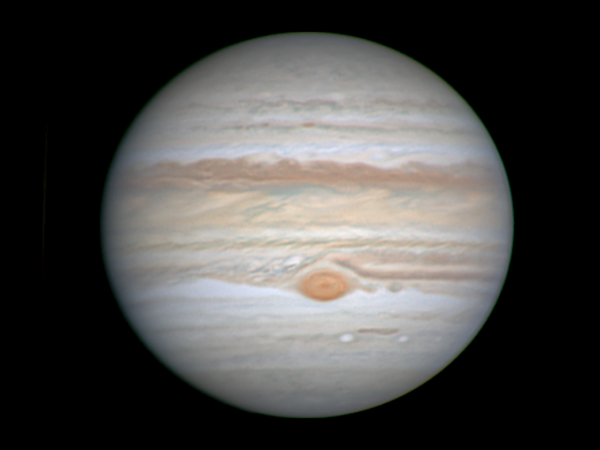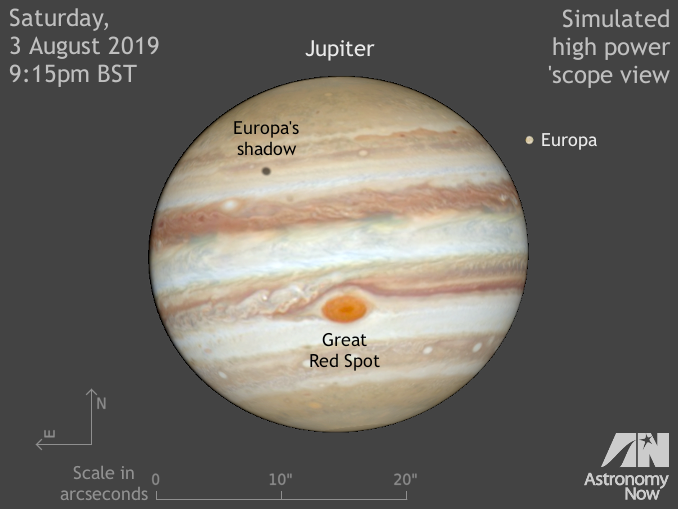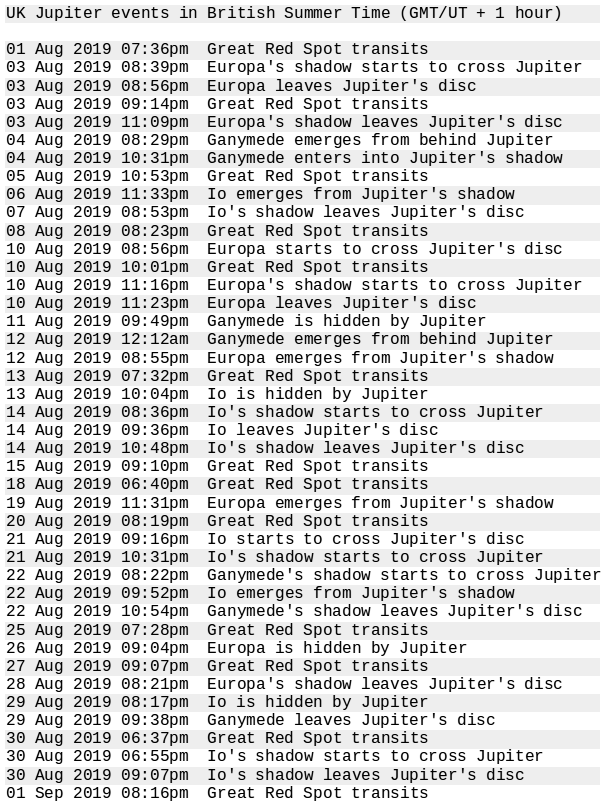More Jupiter events to enjoy in August 2019 – Astronomy Now – Astronomy Now Online

August opens with Jupiter 7½ weeks past opposition. The slow retrograde (westward) drift of the solar system’s largest planet through the constellation of Ophiuchus, the Serpent Bearer, slows until it reaches a stationary point on 11 August. Thereafter Jupiter resumes direct (eastward) motion with respect to the stars. The 9-day-old waxing gibbous Moon lies slightly less than four lunar diameters from the magnitude -2.4 planet late into the UK evening of Friday, 9 August.
Jupiter’s southerly declination has made this a challenging apparition for observers in the British Isles, where the planet struggles to attain a maximum altitude of 15 degrees above the southern horizon. For the heart of the UK, Jupiter is best placed around 15 minutes after sunset at the beginning of August and about 30 minutes before sunset by the end of the month. Consequently, the gas giant is already slipping lower in the south-southwest as twilight deepens, so don’t miss any viewing opportunities.
Great Red Spot
Despite Jupiter’s low altitude, on nights of good seeing there will be plenty to view in telescopes of 7.6-cm (3-inch) aperture and larger at magnifications of 100× or more. The planet’s Great Red Spot (GRS) is still a conspicuous brick red colour and maybe showing sights of renewed flaking activity, so do keep a keen eye on this Earth-sized anticyclonic storm in the Jovian atmosphere.

The table at the bottom of this page lists the best times to see the GRS for observers in the British Isles and those parts of Western Europe at a similar longitude (e.g., Central and Western France, Spain and Portugal). For other locations worldwide, be sure to visit our interactive online Almanac and ensure that the ‘Add phenomena of Jupiter?’ checkbox is ticked. The Almanac’s predictions are in Universal Time.
Jupiter’s Galilean moons
The following table also lists phenomena of the planet’s four large Galilean moons — Io, Europa, Ganymede and Callisto. These regularly pass in front of (or transit) Jupiter, are eclipsed by its shadow, or occulted (hidden) by their parent planet. The shadows of Io, Europa and Ganymede also appear as tiny black dots drifting across Jupiter’s cloud tops, but outermost moon Callisto appears to pass above or below Jupiter owing to the current inclination of its orbit to our line of sight.






